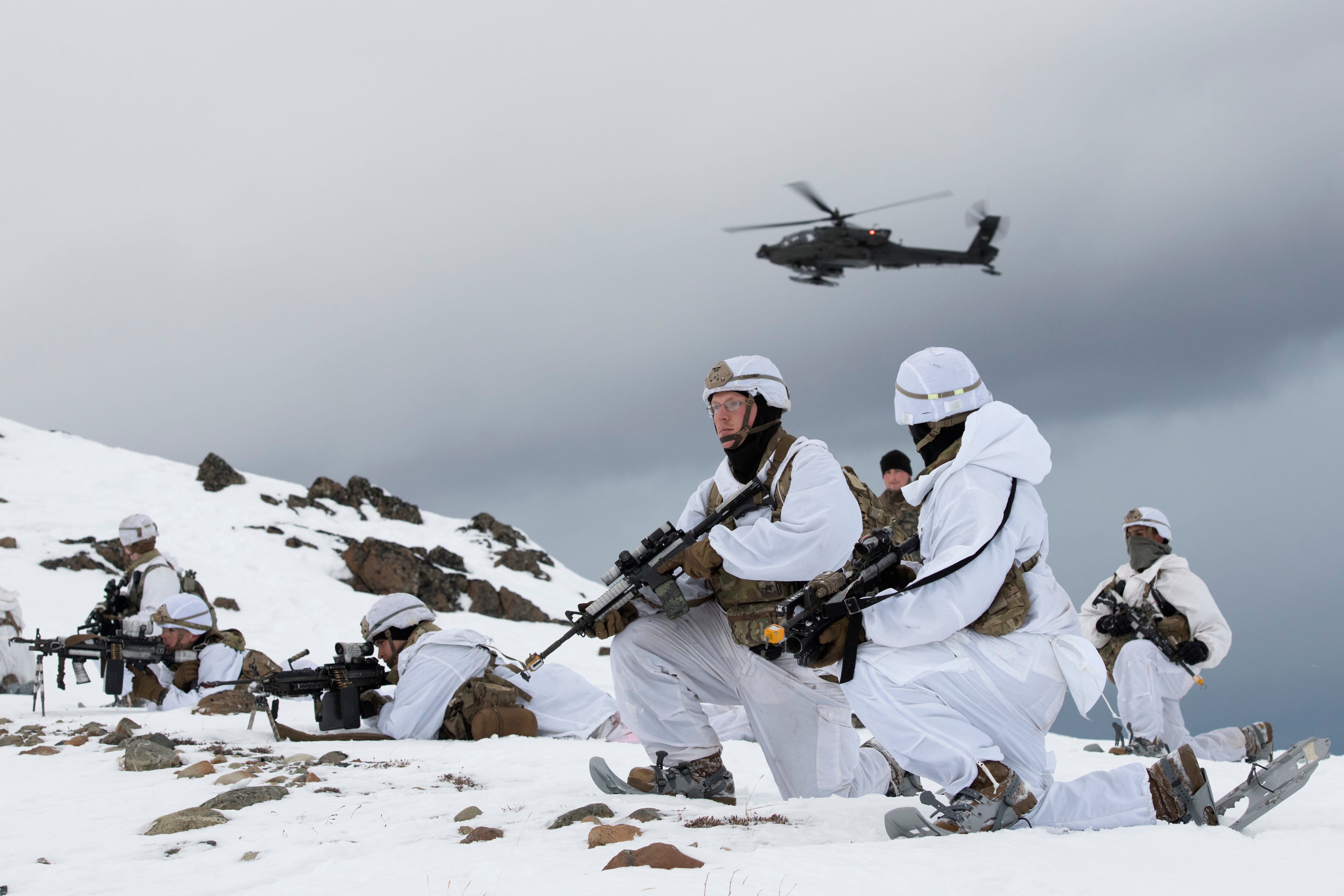In the high North, there’s no respite from the cold. You must carry all the gear you need to fight and survive in the coldest temperatures on the planet. Then you snow march for hours, dragging a sled and post-holing in knee- to waist-deep snow.
Now, break a pickaxe or two trying to bust through ice so you can put a mortar in place. The baseplate cracks, rendering the weapon practically useless.
Your Stryker combat vehicle is low on fuel. You try to fill it up, but the fuel has frozen into a jelly-like state. You’re stuck and night is falling.
That’s life at -65 degrees Fahrenheit.
Gut it out, right? Wrong.
“It’s not about just being ‘hey tough it out, you can handle it, just endure the pain,” said Maj. Gen. Brian Eifler, commander of U.S. Army Alaska. “If you do that, you’ll die.”
Those are only a sample of some of the challenges the Army is facing as it relearns how to fight in the Arctic and at high altitudes — in Alaska and across the globe.
To meet that challenge, experts at the Army’s Maneuver Center of Excellence have been meeting with Army Alaska soldiers and interviewing Arctic experts from a range of nations and units to build the fighting force it needs at those devastating climes. For now, that Arctic-specific unit looks to be built on the foundation of a Stryker Brigade Combat Team.
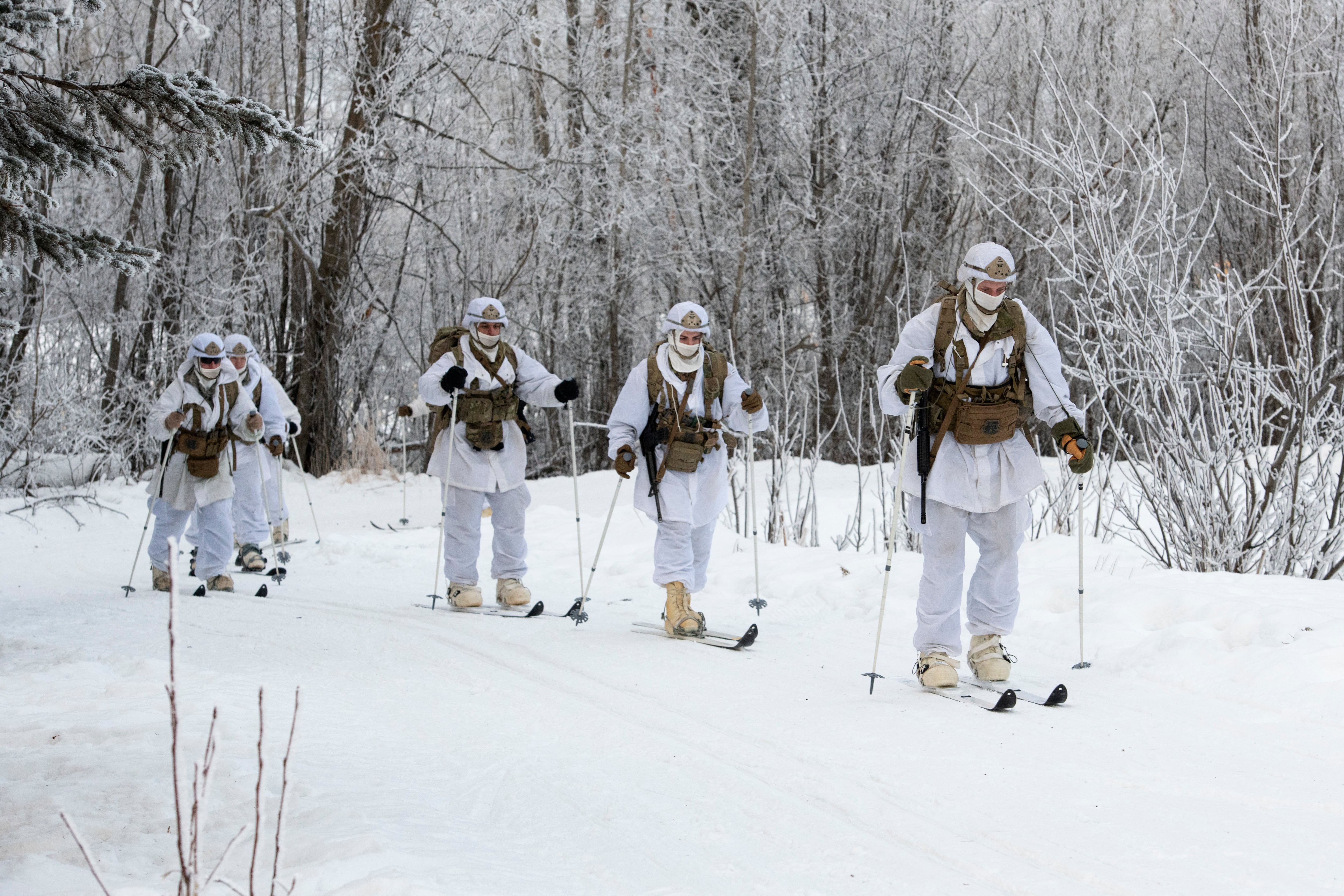
Though big Army hasn’t pulled the trigger yet, the concept taking shape in the near future looks like an almost entirely self-sustaining SBCT with more infantry, mobile, turreted mortars and dedicated communications, electronic warfare and cyber teams.
That’s based off an October presentation by Dominick Edwards, deputy director at Army Capabilities Manager for the SBCT at MCOE. He gave the presentation at the National Defense Industrial Association Future Force Capabilities Conference and Exhibition.
All of the Arctic stakeholders across the Department of Defense are reviewing recently submitted concepts for an Arctic Brigade. Ultimately, the Army chief of staff will make the final decision.
Current plans call for the finalized document to go to Army leadership in June, Ben Garrett, MCOE spokesman, told Army Times.
Some of that will be informed by a February strategic wargame in Alaska.
The Pentagon also announced in mid-November that Anchorage, Alaska, would be the home for the DoD’s Ted Stevens Center for Arctic Security Studies.
This push unfolded from the Pentagon’s 2019 Arctic Strategy and the 2021 Army Arctic Strategy, all aimed at protecting homeland installations and interests in Alaska and building the ability to deploy an expeditionary, Arctic-specialized fighting force.
Melting sea ice is allowing for greater mobility and navigation of the Arctic, which provides faster shipping routes and military positioning opportunities for Arctic nations, and at least one non-Arctic nation.
A far North presence
In May three Russian submarines busted through ice at the North Pole. Those three subs had the capacity to carry a total of 48 ballistic missiles. Two MiG-31 jets and Russian ground troops met up with the subs, all a part of a Russian military exercise.
U.S. Alaska Command reported earlier this year that they intercepted more Russian military aircraft in 2020 than any other time since the Cold War ended in 1989.
Though not an Arctic nation, China published an Arctic Strategy in 2018. The Chinese government has built Arctic research stations and pushed for infrastructure development in the region.
Currently, the Army has approximately 11,600 soldiers stationed in Alaska, mostly at Fort Wainwright and Joint Base Elmendorf-Richardson. Active duty units include two brigade combat teams, a combat sustainment support battalion and two aviation battalions.
Army Chief of Staff Gen. James McConville noted the national security interests in the Arctic in early 2021, pointing to plans to look at equipment needs, potential soldier basing decisions and the establishment of an Alaska-based Multi-Domain Task Force.
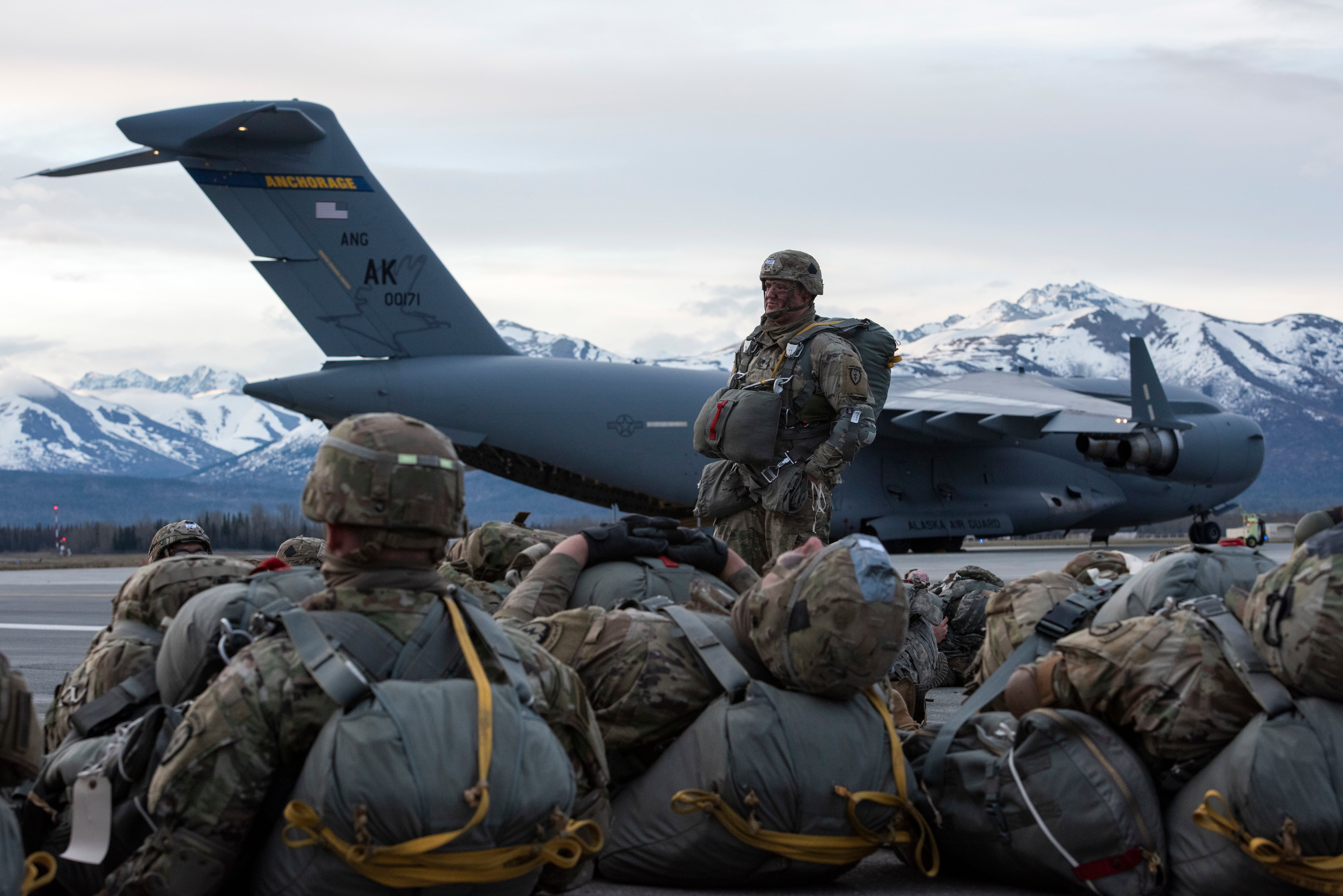
Army Times reported in early 2021 that the service was looking at Arctic-specific spending in upcoming budgets and deciding whether more soldiers are needed for permanent stationing in Alaska.
The current budget proposal calls for $65 million in research, development and acquisition and operation and maintenance funds to begin implementing the Army’s Arctic Strategy, the Office of the Chief of Public Affairs told Army Times.
“No decision has been made on stationing more soldiers in Alaska,” according to OCPA.
The Center for Army Lessons Learned conducted a “gap analysis” during the February 2021 Arctic Warrior exercise in Alaska to understand equipment shortfalls, according to then-Col. J.P. Clark, chief of the strategy division for Army G-3/5/7.
A large-scale March training exercise will see soldiers from the 4th Infantry Brigade Combat Team, 25th Infantry Division, parachute into a training area and fight as the opposing force against 1st Stryker Brigade Combat Team, Eifler, Army Alaska’s commander, told Army Times. The event is expected to total more than 7,000 soldiers on a 10-day field exercise.
In need of time
Everything, from planning an exercise to conducting basic soldier tasks, takes more time in the Arctic.
Col. Stephen Phillips, commander of the 1st Stryker Brigade Combat Team, 25th Infantry Division, stationed out of Fort Wainwright, Alaska, told Army Times that there are “little, hidden manpower challenges” when running a unit in Alaska.
“It takes longer to do things, which drives its own manning requirements,” Phillips said.
Staff Sgt. Mitchell Mackai, howitzer section chief, Charlie Battery, 2nd Battalion, 8th Field Artillery Regiment, told Army Times that crew drills and movements must factor in ice in the winter and raging rivers in the summer.
Even cleaning weapons presents problems. Too much lubrication can freeze. When temperatures hit certain levels, soldiers must switch to a different kind of lubricant.
Soldiers new to the Arctic must be taught these lessons when they arrive to Alaska. Ultimately, though, Phillips said the quality of the soldier is what determines whether they’ll thrive and not simply survive in the harsh environment.
“If a soldier wants to be here, they’ve already overcome 80% of the challenge, they recognize that it’s going to be tough,” he said.
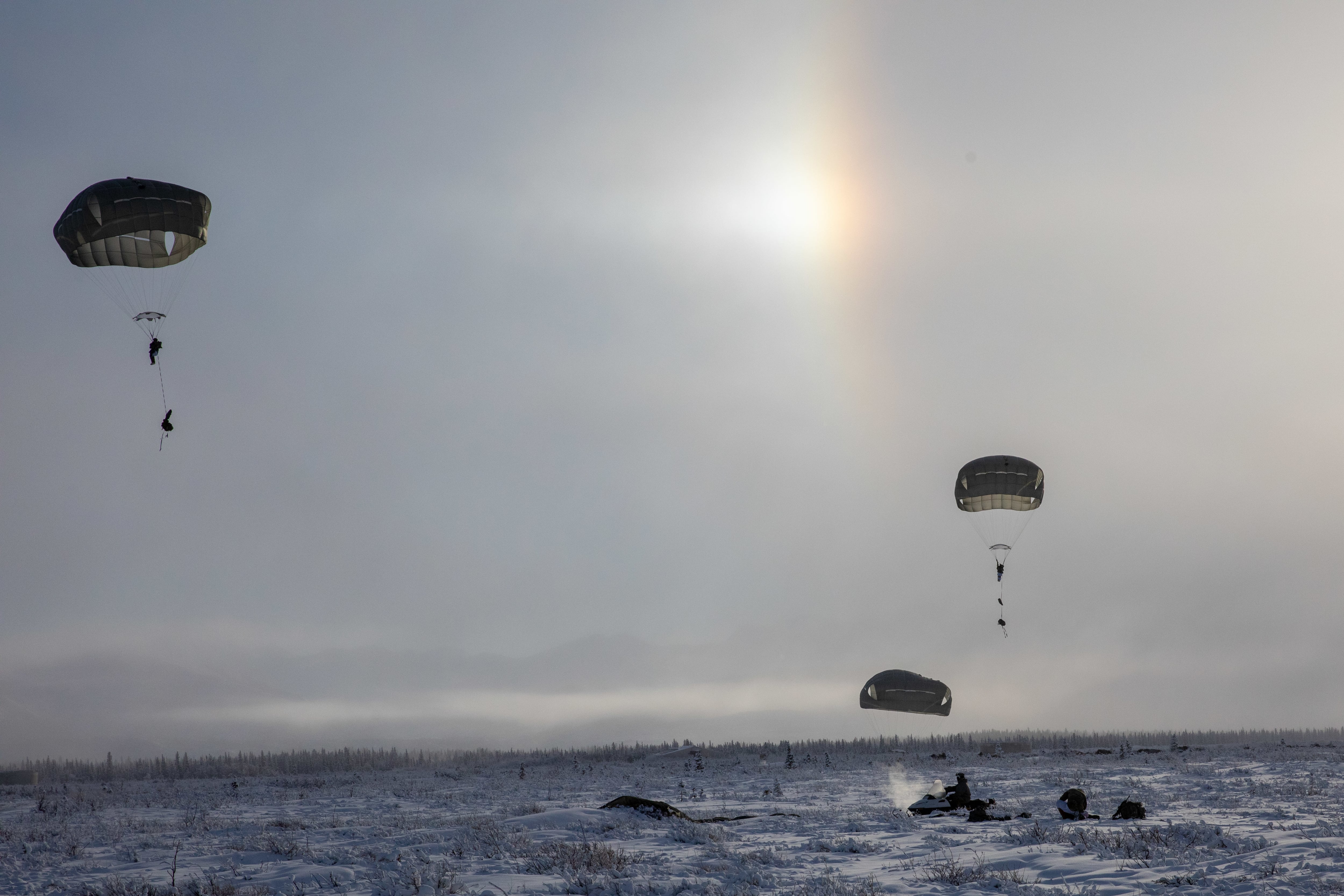
Capt. Jeremy Roznowski, commander of Alpha Company, 1st Battalion, 24th Infantry Regiment, a 1-25th SBCT subordinate unit, said Alaska should attract a certain kind of soldier, one who seeks a challenge and wants to test themselves.
And skills learned in the frozen North pay big dividends when that soldier leaves for a unit in nearly any other clime.
“If you can master logistics here, wherever you go in the lower 48, it’s easy,” Roznowski said.
The captain recalled seeing that knowledge in another soldier before. During field training at Fort Bragg, North Carolina, years ago, about 8 inches of snow suddenly blanketed the base. Most of the soldiers were freezing. But one junior soldier who’d came to the unit from Alaska took off the standard uniform and switched over his contact layer of clothing.
“You’re insane, there’s no way that will keep us warm,” the captain remembers someone saying.
But they did it anyway, and sure enough, the rest of the training, the soldiers were fine.
Mackai said he came to Alaska after having served in the freezing reaches of Fort Drum, New York, with 10th Mountain Division.
The staff sergeant thought he knew cold. He was wrong.
The added burden of months of darkness followed by months of sunlight also shifted his thinking on how to operate in the field.
As Philips put it, there are two seasons in the Arctic — hot and light, or cold and dark.
Warmth isn’t a luxury, it’s a necessity, Roznowski said.
And when he says warm, he doesn’t mean toasty, he means 40 degrees Fahrenheit.
“Where water doesn’t freeze, not where you’re happy,” Roznowski said. “That goes for our equipment too. It’s not designed to keep you happy, it’s designed to keep you from death.”
Just trying to keep water from freezing or fuel from turning into jelly is a challenge.
“Nobody’s ever truly warm until you get back to the rear and get warmed up,” the captain said.
The planners looking to build a future Arctic brigade combat team might give leaders such as the colonel and the captain more to work with.
The 1st SBCT of the 25th ID at Fort Wainwright has three infantry battalions and a squadron. The 4th BCT of the 25th ID at Joint Base Elmendorf-Richardson is an airborne brigade with only two infantry battalions. Most IBCTs outside the lower 48 states have three infantry battalions.
Plans call for another infantry battalion for 4-25th.
“You’re rotating not only a standard patrol-rest-maintenance cycle but also a personnel cycle so that they can go back out,” Edwards, the deputy director at Army Capabilities Manager SBCT, said at the October conference. “And you’re doing these in much shorter time intervals. It stands to reason you’ll probably need more soldiers.”
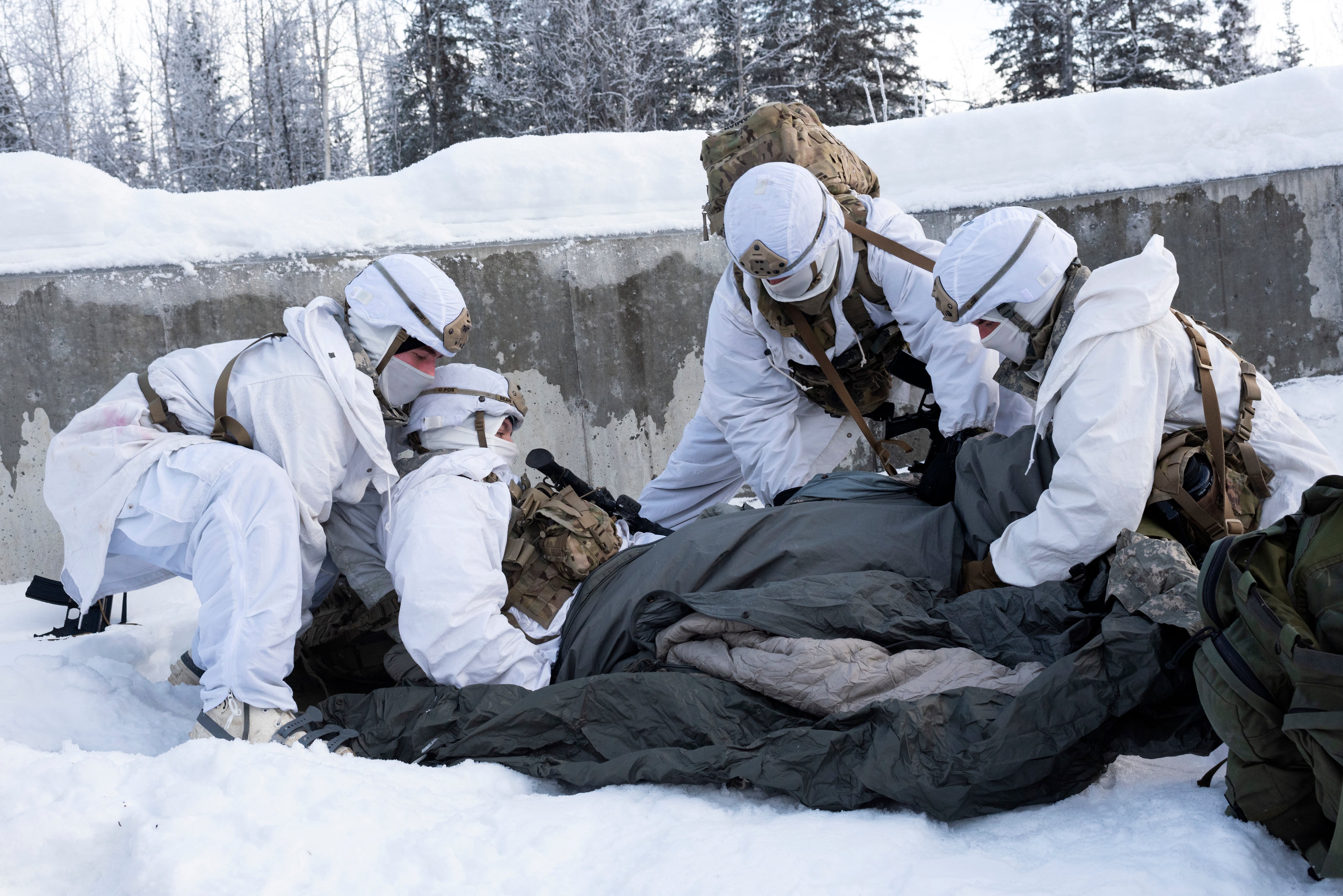
But a lone brigade rolling across 500 to 700 miles of terrain to meet the Russian threat at the Bering Strait isn’t the most likely way in which this new combat force would be used.
“This force is likely going to be doing a lot of securing things that matter to us,” Edwards said.
That could include securing a port or attacking another port or infrastructure node, Edwards added.
In many ways, that’s similar to Edward’s own deployment to the remote portions of Kunar, Afghanistan, as a field grade officer.
“We couldn’t be everywhere so we have to be where it matters,” he said.
Out there alone
There are no calls yet for creating an Army Arctic Division. Although the rest of the Army is shifting from the brigade to the division and corps-level fight, the austere conditions of the Arctic mean a BCT might be out there alone.
Under current plans, an Arctic brigade’s fires will be at the division level, meaning their most reliable, and sometimes only, fires will be their mortars.
“We know that mortars are going to be the only indirect fire capability that a commander can count on,” Edwards said.
Mobile, mounted, turreted mortars may be the only option, he said. Dismounted mortars require soldiers to dig in beneath ice or use swampy, unstable ground in spring and summer months.
“Your mortar soldier should not be digging more time than they’re shooting, especially [given] what we know about fires and counter fires,” Edwards said.
“A mortar fired off a mobile platform is probably the right answer for what we’re trying to do,” he added.
Right now, 1st SBCT 25th ID is equipped exactly the same, except for a few cold weather items, and manned exactly the same as other SBCTs outside the contiguous states, which they call the “lower 48.”
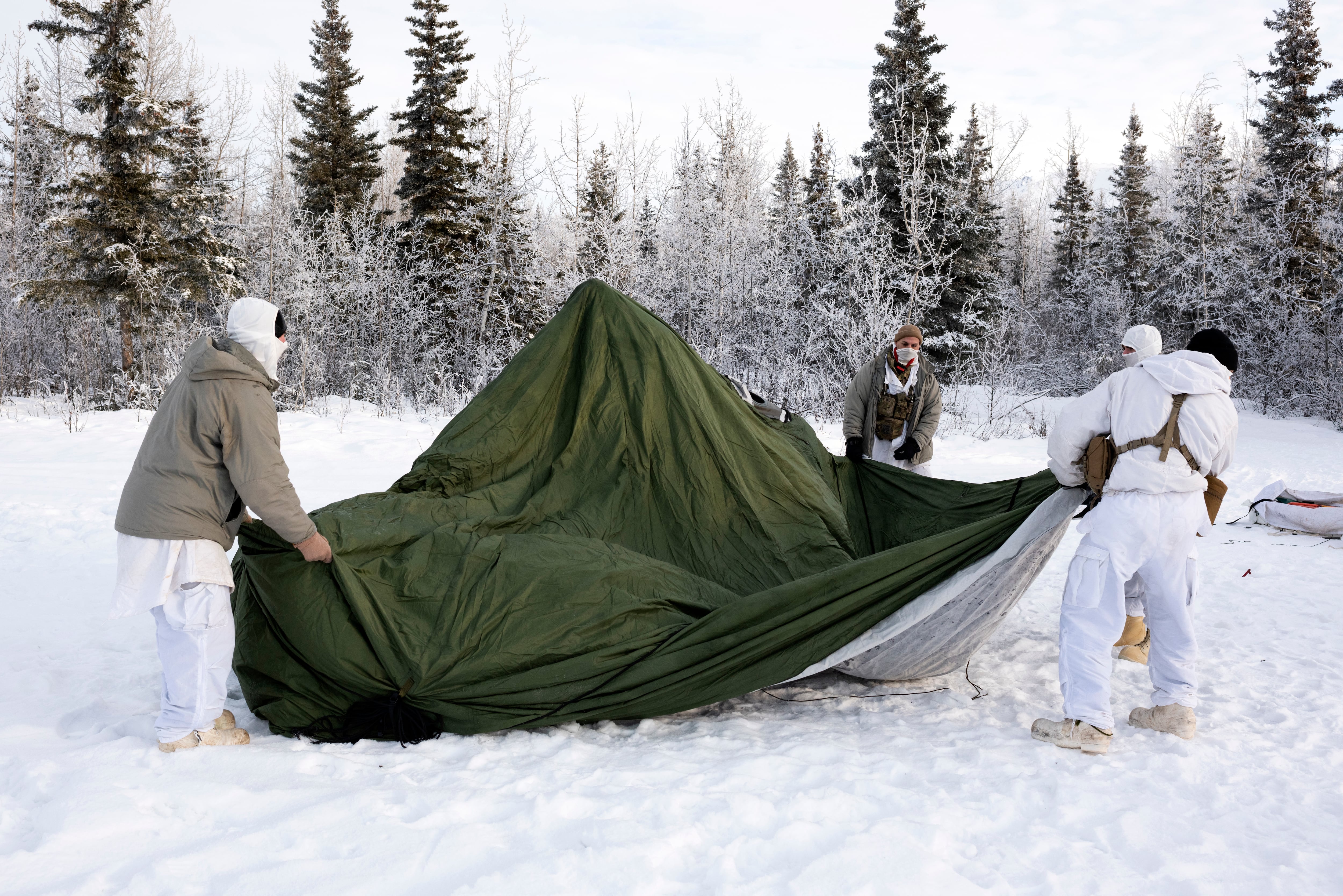
“We’re equipped the same way, manned the same way,” Phillips said.
Eifler, Phillips and other soldiers with Army Alaska interviewed by Army Times spoke specifically about their current status and not any future plans. But they’re still considering how their units are employed.
Beyond fires, brigades must maintain fuel and power themselves with little chance of immediate resupply. They may also have a more pressing need for non-kinetic options because they won’t have the immediate support of a division at their back.
A draft plan still being reviewed, which Army Times got a look at during the October conference, is likely to change. But it shows a rough road map of what that future Arctic SBCT might look like.
The draft plan includes acquiring an Arctic mobility platform for all infantry, heavy weapons company, scout and engineer squads. It also would increase the number of small drones in the unit and adds a robotic combat vehicle, a terrestrial layer system for electronic warfare, a Chemical, Biological, Radiological, Nuclear Reconnaissance Platoon and a third engineer company — in addition to adding an infantry battalion.
The draft plan also includes increasing brigade support battalion water production and transport capability, increasing their additive manufacturing capability and drone maintenance platoon capacity.
Kitted up for the cold
Most soldier gear and vehicles are tested at about -30 to -35 degrees Fahrenheit. That’s only halfway to the bone-chilling cold temperatures of -65 degrees Fahrenheit that soldiers are likely to see in the Arctic.
And something as simple as the shape of the globe near the top of the planet throws a wrench into things soldiers take for granted — communications. In the far North, satellite communications windows are brief.
Fuel on tap, whenever needed, is also no longer a given because even fuel freezes at -65 degrees Fahrenheit.
“If you haven’t been to those northern latitudes and never thought about satellite coverage and fuel, these are the sorts of things we’re wrestling with,” Edwards said.
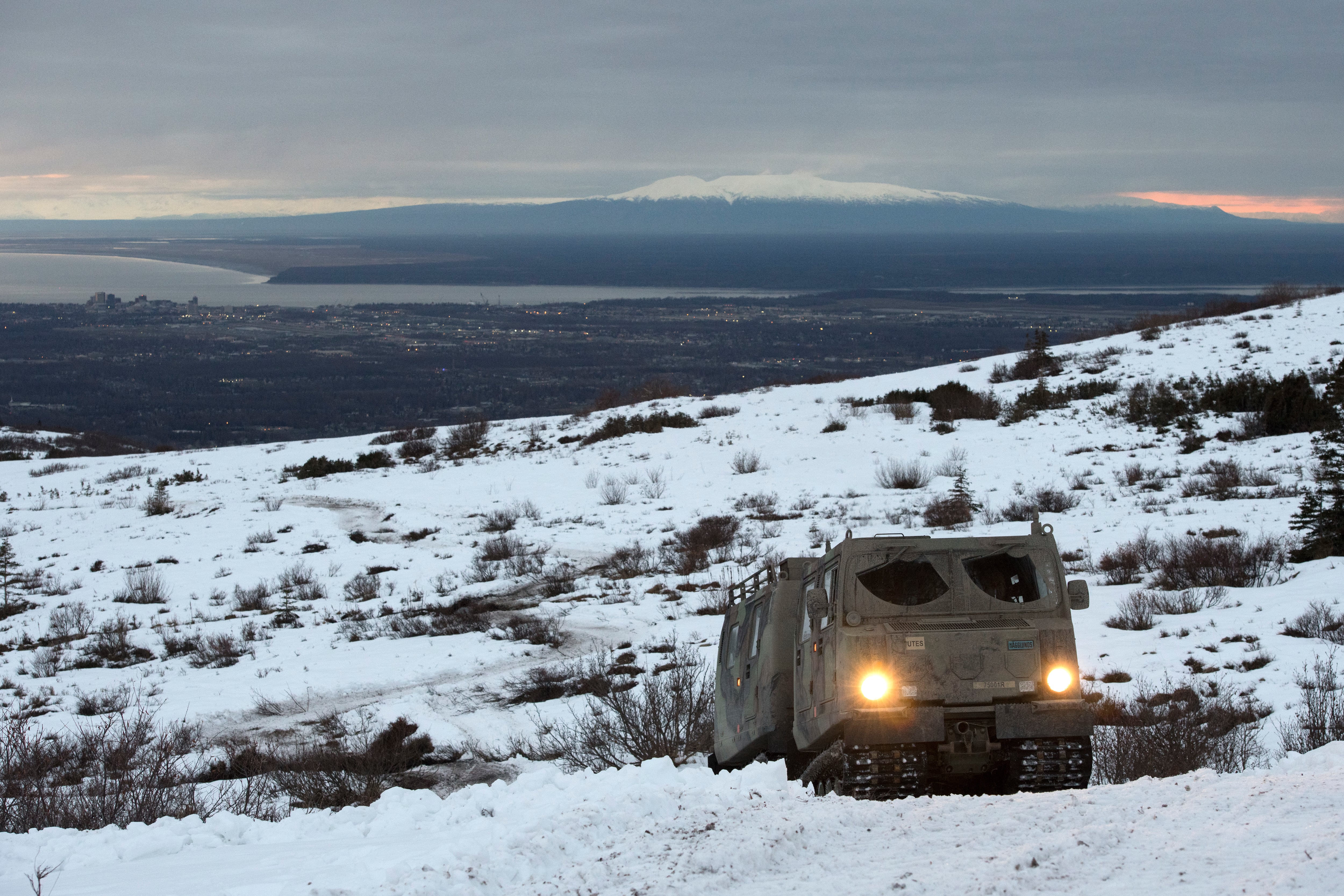
Phillips pointed out that before even going to the field, his staff pulls out technical manuals to check the specifications of equipment, especially anything with a circuit board.
Soldiers have to know the operational temperature range of everything they carry, when it will quit working and when it’s likely to break.
“I’ve never had to do that in the previous two decades of my career,” Phillips said.
In April, the Army kicked off a competitive prototyping effort for a new, all-terrain vehicle that can operate in the Arctic.
The Cold-Weather, All-Terrain Vehicle, or CATV, is planned for down select by mid-2022. Prototypes are undergoing testing at Cold Regions Test Center in Alaska through December.
The CATV is going to replace the Small Unit Support Vehicle, the Army’s existing option, which is “no longer sustainable,” said Tim Goddette, program executive officer for the Army’s combat support. The SUSV is 1960s-era technology that was procured in the early 1980s.
The Army plans to buy 110 CATVs initially with current budget plans calling for a total purchase of 163 vehicles.
“We think we have to get a snow vehicle, but it also has to be able to ford a certain depth, carry an infantry squad, etc.,” Edwards said.
Edwards doesn’t see the future Arctic brigade taking on invading forces alone. Instead, the unit will likely be used to secure things “we care about,” he said.
But that doesn’t mean the Army is building a force to just “go sit somewhere,” he added.
The future Arctic brigade has to be deployable to other Arctic and high elevation regions, such as areas surrounding Russia and China.
The Army has long held a military exercise with India known as Yudh Abhyas. It was previously held at Joint Base Lewis McChord, in Washington state, and focused on desert climates, but that changed recently to an Arctic mission.
During the most recent iteration, soldiers practiced evacuating casualties with Black Hawk helicopters and sling loading artillery under CH-47 Chinooks. They also assaulted an objective as a combined force thousands of feet above sea level in the Chugach Mountains, through deep snow, blowing winds and sub-freezing temperatures.
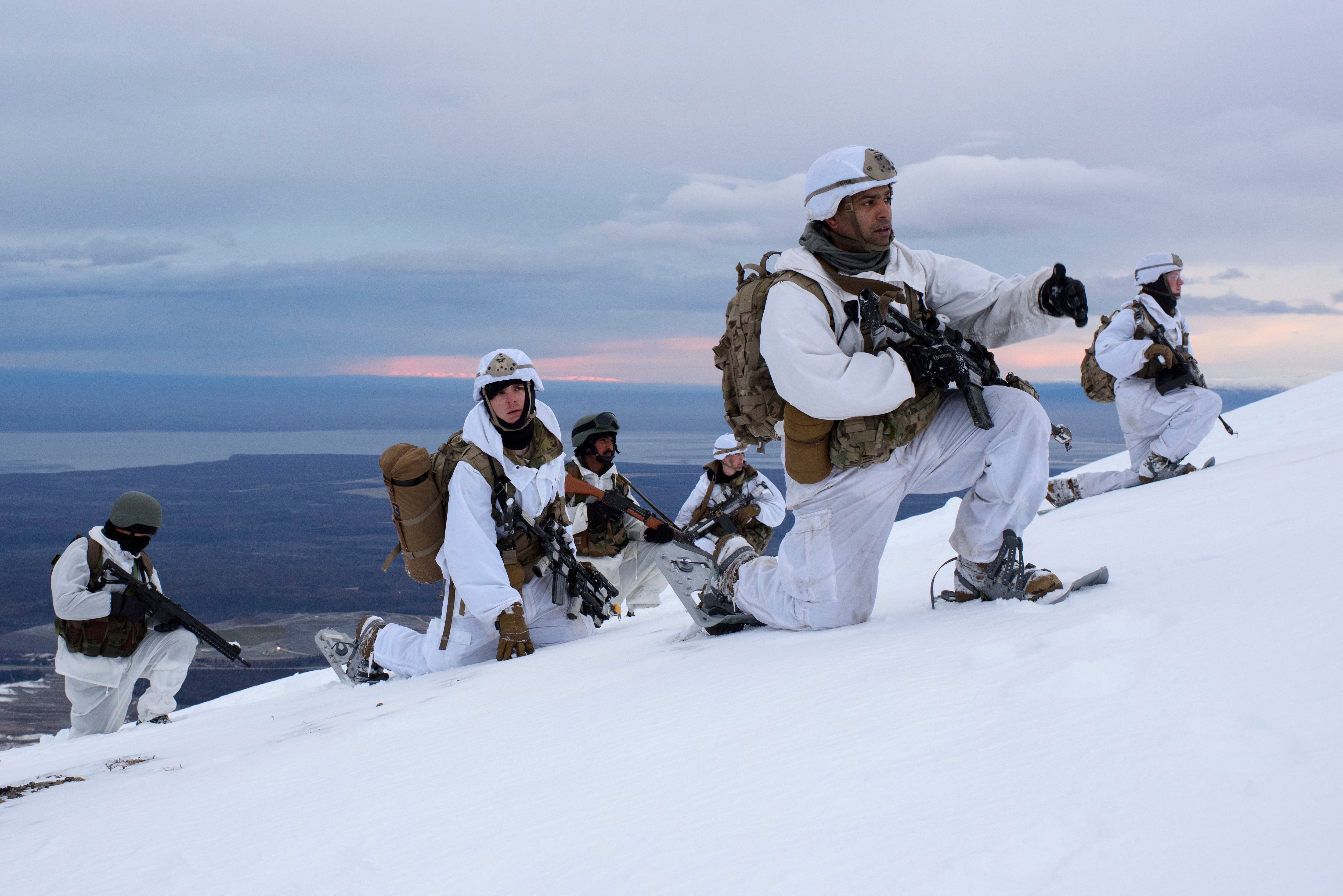
In late 2022, U.S. soldiers will train with Indian counterparts in the Himalayas on the border of China, where tensions have flared in recent years.
“Honestly, we spend a lot of time talking about the winter,” Edwards said. “That’s the easiest time to maneuver.”
Gunnery, for instance, is often held in January, February and December, because that is the time of year soldiers can get over the ground.
“If you haven’t been to the Arctic in April-May-June, it’s hard to appreciate how muddy it is, how many creeks and rivers you have to cross,” Edwards said.
Crossing streams, rivers and muddy terrain is where engineers come in handy.
The engineer capability as it currently stand is “inadequate,” Edwards said.
“That’s going to be very demanding in this environment even if you’re moving tens of kilometers, much less over greater distances,” Edwards said.
How do you transport frozen water or fuel? And how do you liquify the fuel once its needed?
That’s another problem still being worked.
MCOE has run their ideas by the current Army Alaska leadership, including Eifler, the Army Alaska commander.
“They tend to think we’re going in the right direction in our thinking about this,” Edwards said.
But there are some kinks to smooth out.
To extend the range of the brigade-sized element, sensors will be key. Edwards put a lot of sensors in the working plan. That saw some pushback from Eifler’s staff.
“Hey, you got a lot of sensors here,” they said.
“Yes sir we think they’re critical,” Edwards said.
“You want to guess how long that battery lasts out here in December?” they said.
“I can tell you the answer is not long,” Edwards agreed.
Todd South has written about crime, courts, government and the military for multiple publications since 2004 and was named a 2014 Pulitzer finalist for a co-written project on witness intimidation. Todd is a Marine veteran of the Iraq War.
